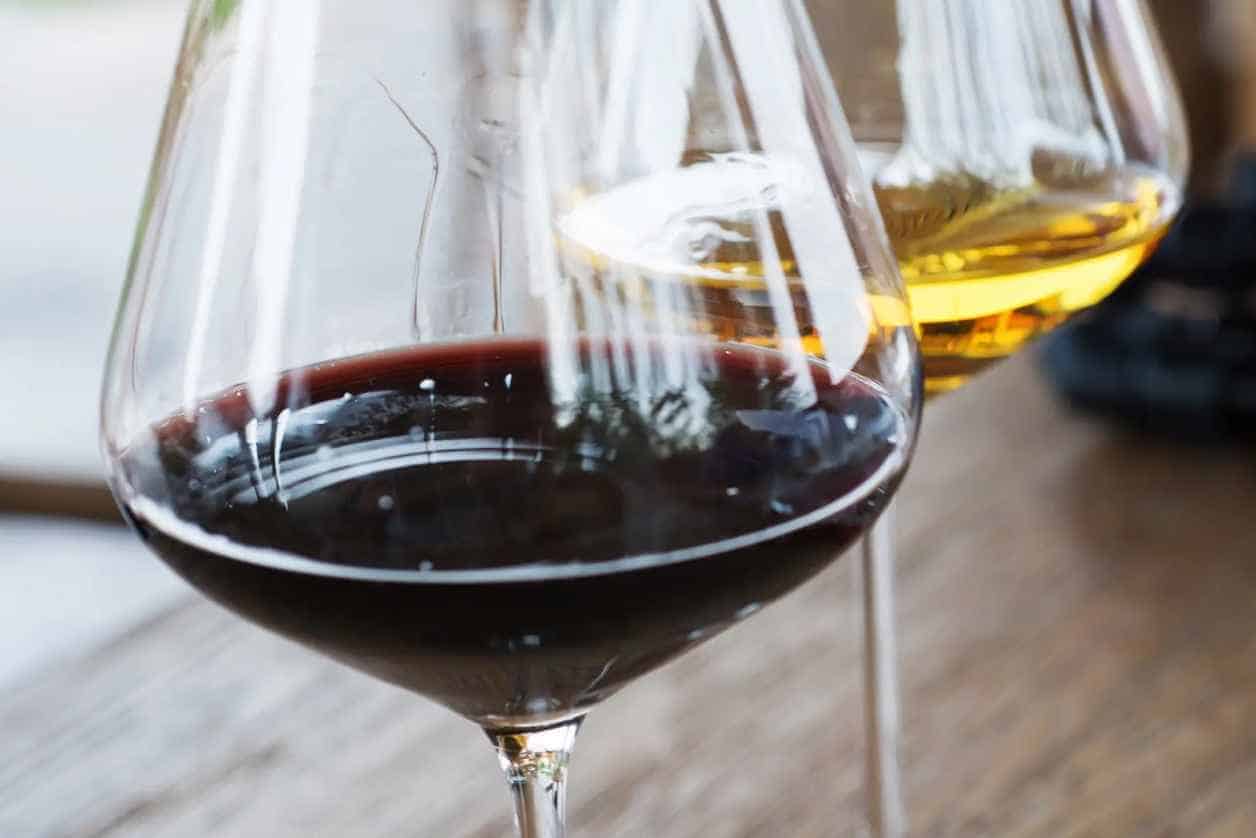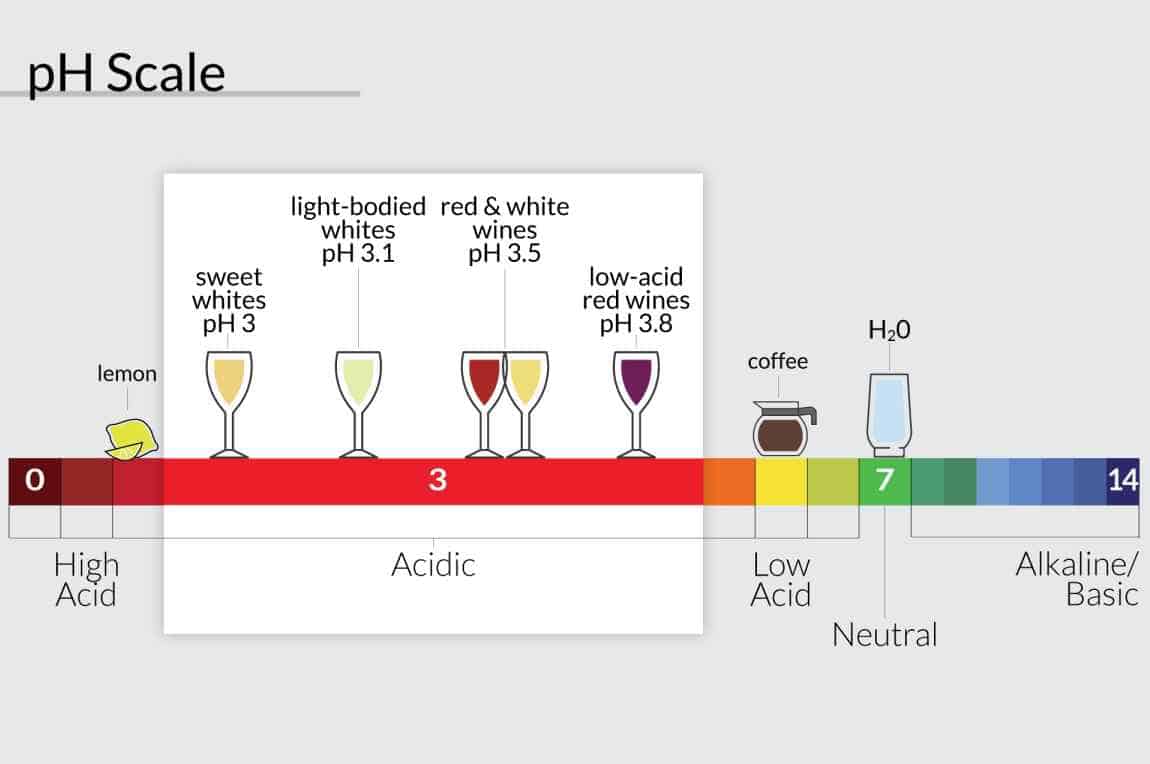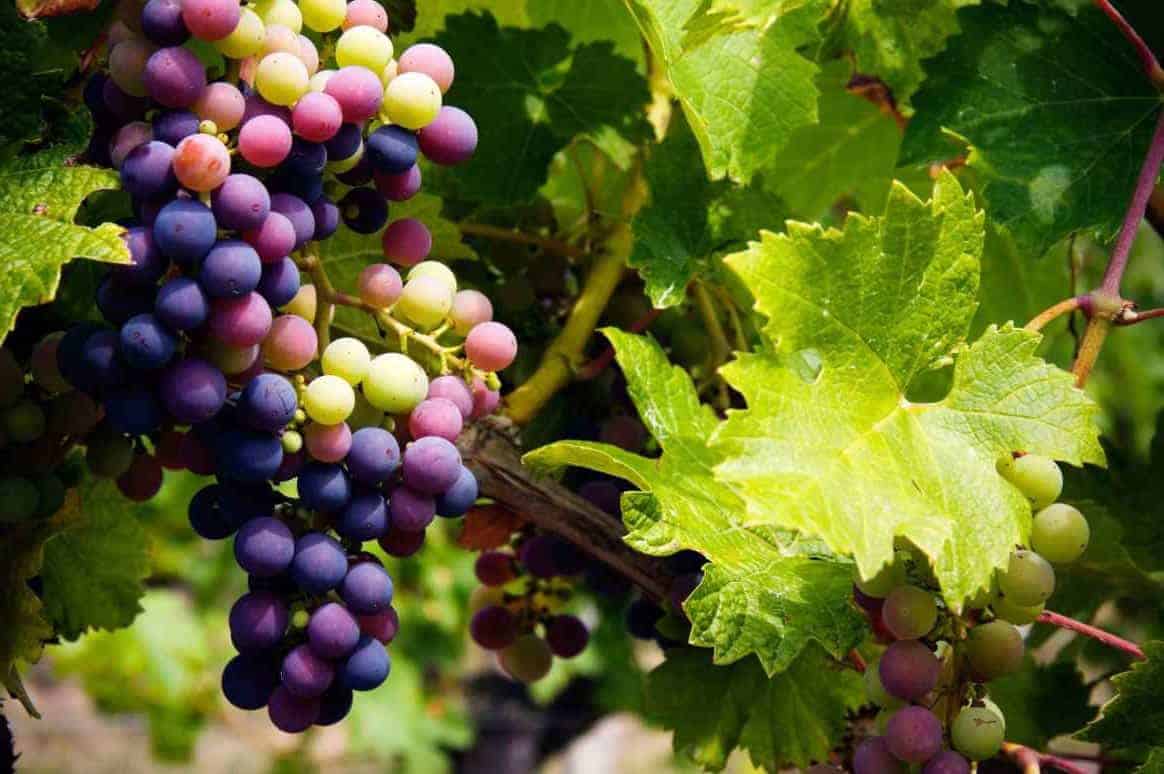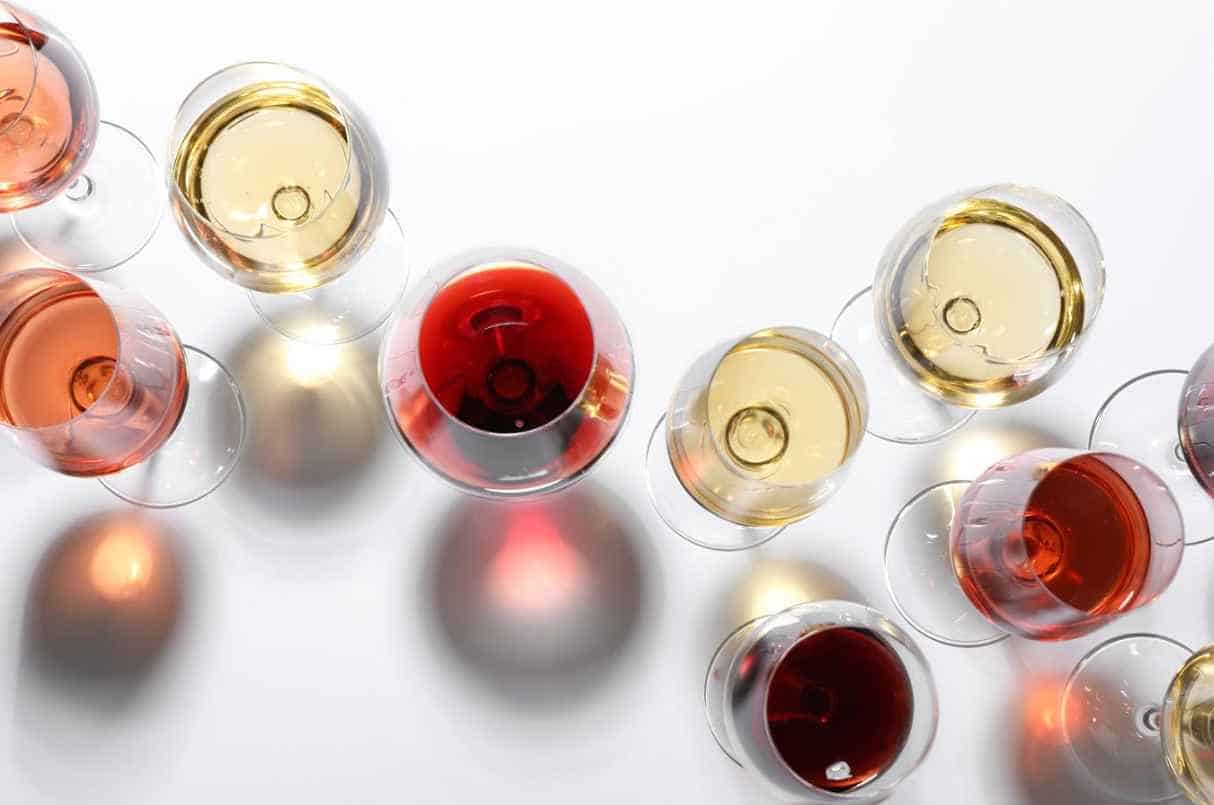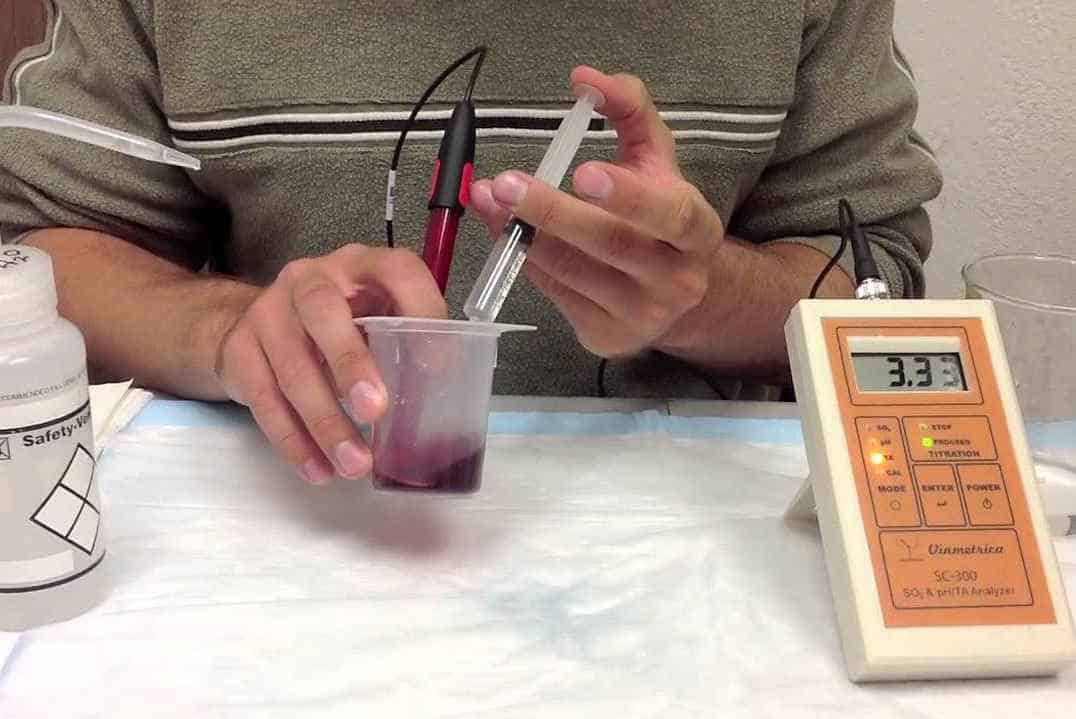A couple of glasses of wine can give us acid reflux and heartburn, but we often shy away from the pain— for the love of wine. These side effects could be the result of drinking an acidic wine.
However, most wine enthusiasts do not worry much about wine acidity because it is the primary feature when wine tasting. But for those sensitive to acids, understanding wine acidity helps them prevent stomach upset.
Is Wine Acid?
Yes, wines are acidic. In the pH spectrum, wine acidity ranges from 2.5 to 4.5 pH. There is a possibility that your favorite wine is highly acidic.
Acid is one of the primary traits of wine. Wine without acid tastes unbalanced, bland, and heavy. Hence, it is present in every wine. Acidity is responsible for the sour and tart taste of wines.
Wine acidity level depends on several factors, mostly on the grapes the wine is made from.
Factors that Affect Wine Acidity
Wine acidity heavily depends on the where, when, and how of the winemaking process. Where the grape variety is grown, when the grape is harvested, and how the winemaking process is done influences its level of acidity.
Grape Variety
Where grape varieties are cultivated is the primary factor influencing their acidity levels. Grapes cultivated in regions with cooler climates are more highly acidic than those from warmer climates. Meanwhile, the grape variety grown in tropical climates produces full-bodied wines with low acid levels.
Ripeness of Grapes
The when matters when harvesting grapes. Grapes harvested earlier are more acidic than those allowed to ripen a little longer. A winemaker can schedule the harvest time earlier or later based on how acidic they want their wine to be.
Malolactic Fermentation
While wine becomes acidic naturally from its grape varietal, it may not have reached its desired acidity level. Winemakers have the technique to add acid during primary fermentation. Tartaric or citric acid is added to enhance the wine’s acidity, flavor, aroma, and color.
However, this may lead to a problem for winemakers, and the wine becomes too acidic. Winemakers reverse the process through malolactic fermentation. In this stage, the malic acid converts to lactic acid, which reduces the wine’s acidity and balances the wine flavor.
The Taste of Acidic Wine
A drop of citrus juice on your tongue or the thought of having something sour helps you imagine what an acidic wine tastes like, which makes you salivate, clench your muscles, and pucker.
The higher the wine acidity, the more you salivate or have these reactions when drinking. Highly acidic wines have a fresh, zesty, and crispy texture.
Types of Acids in Wine
You can find different acids in wine that help balance its flavor and aroma. Acids commonly found in highly acidic wines are citric, lactic, malic, and tartaric. Among the four types of acid, malic and tartaric acid is 90% responsible for the wine’s acidity.
Tartaric Acid
As mentioned, tartaric acid makes up most of the wine acidity. It is the most durable and fixed acid in a wine, stabilizing its color and flavor profile. The concentration of tartar highly depends on the grape variety, growing climate, and soil.
Malic Acid
Besides tartaric acid, malic acid is the second most prominent acid you can find in wines. All fruits and berries have malic acid, and it shows up as a young fruit flavor. However, as grape vines age, it metabolizes the malic acid, reducing its concentration in wine.
If the malic acid is too high during the winemaking process, winemakers use the process of malolactic fermentation. Some of the malic acids are converted to mild lactic acid.
Lactic Acid
When your wine has more lactic acid, it develops a more creamy, buttery mouthfeel. You can encounter lactic acid in fermented products such as kefir, yogurt, and sourbread. Some winemakers add lactic acid during the winemaking process.
The bacteria in lactic acid convert sugar and malic acid to lactic acid, making the wine creamier and softer flavor profile, enhancing the complexity and roundness of the wine.
However, winemakers are cautious when adding lactic acid to wines because more lactic acid content causes headache and exacerbate wine allergies.
Citric Acid
Among these common types of acids in wine, citric acid has a lesser content level, but its presence in the wine is quite noticeable. Winemakers usually add citric acid in the phase of malolactic fermentation.
As mentioned, malolactic fermentation involves the yeast converting the citric acid to acetic acid, resulting in a more aggressive acidic taste. Hence, winemakers must be cautious when adding citric acid during the winemaking process to avoid making it more sour and acidic.
How to Measure Wine Acidity
Wine acidity is measured in two ways: pH scale and titratable acidity.
pH Scale
A simpler method to measure wine acidity is the pH scale. pH stands for the power of Hydrogen, a logarithmic scale that measures the acidity level of a water-based solution. The lower the pH number, the more acidic the wine is.
Let’s skip the technical definition. All you have to remember is a wine with a pH of 3 is ten times more acidic than a pH of 4.
The pH level determines the acid level of the wine and not its acidic taste.
Titratable Acidity
Titratable acidity is different from pH scale. It measures the total acidity in a wine bottle and tells how strong the acid in the wine tastes. If pH levels are measured on a scale, the titratable is in percentage.
Most Acidic Wines
Wine acidity is what you will look at in wine tasting. The most acidic wines do not necessarily mean they are bad wines. Most wines with high acidity are well-balanced in their tannin, sugar, and alcohol.
If you are looking for wines with the highest to lowest acidity, here are a few examples.
| Wine pH Level | Wine Type |
| 3.0 | Sweet white wines |
| 3.1 | Light-bodied white wines |
| 3.3 | Grenache |
| 3.4 | Chardonnay |
| 3.5 | Viognier |
| 3.65 to 3.75 | Malbec and Zinfandel |
| 3.8 | Cabernet, Marsanne, Roussanne |
| 4.0 | Merlot |
Although all wines fall between the pH scale of 3 to 4, the slight difference between its acidity level are palatable and tells the difference of how they taste.
The safest wine to drink for those who experience heartburn and acid reflux is Merlot. It has a lower acid and fewer tannins than other grape varietals.
A popular Merlot wine is the Smith Devereux Ibex Single Vineyard Merlot 2017. You will love the flavors of vanilla, blackberry and special notes of tobacco, coffee beans, and chocolate.
Meanwhile, Marsanne is the most popular choice among white wines for low acidity levels. The best commercial example of Marsanne wine is M. Chapoutier Hermitage Chante Alouette Blanc 2016. Its rich texture is the best alternative to Chardonnay because of its unique flavor and special notes.
Food Pairing Based on Wine Acidity Level
Best is subjective, but there are two ways to pair wines with food. You can pair wine with contrasting flavors or pair it with foods that complement the food flavor.
Create a basic flavor profile of the dish to know which wine complements it best. So, how do you pair out wine and food?
Contrasting Acidity
The rule of thumb when pairing contrasting flavors is to hit on the basic flavors: sweet, bitter, sour, umami, and salty. The sourness of an acidic wine does well when paired with foods of any flavor.
Let’s say you pair a highly acidic wine with cheese. The saltiness and creaminess of the cheese create a delicious equilibrium.
Complement Acidity
Meanwhile, another food pairing strategy is to go for similar flavors. Just ensure that the flavor of the wine and food does not overpower each other and fill in the gap.
Frequently Asked Questions About Wine Acidity
Does wine trigger acid reflux?
Although wines have known health benefits, highly acidic wines could trigger acid reflux or gastroesophageal reflux disease (GERD).
When dealing with GERD or acid reflux, you must understand your triggers. Hence, if you have these digestive diseases and wine is on your trigger list, only wines have lower acidity levels.
Is wine more acidic than beer?
Although wine, beer, and hard liquor have a standard pH balance of around 4 and lower, wine is more acidic than beer. Wines range from 3 to 4 pH levels. Meanwhile, regular beers have a pH level of 4 to 6.
Do white wine and red wine have the same acidity?
No, white wines are more acidic than red wines. This roots in the variety and harvest time of the grapes. White wines have a tartaration acid level of 0.7% to 0.9%, which indicates that they are more acidic than red wines.
Final Takeaway
Yes, wine is acidic. Wine acidity greatly depends on the grape varietal, aging process, and winemaking techniques. High acid wines have a crisper and more tart on palate, while low acid wines are smoother and rounder. Wine is the delicate thing that we love most.

George Moore, co-founder of Wine Flavor Guru, is a charismatic entrepreneur with a rich background in California’s wine industry. Alongside Sylvia, he transformed a Sonoma County vineyard into a source of premium wines. George’s expertise in sourcing exceptional grapes and his approachable style make wine appreciation both accessible and engaging.
